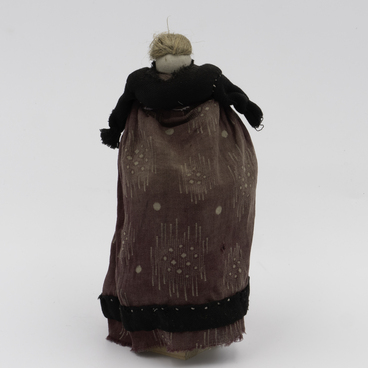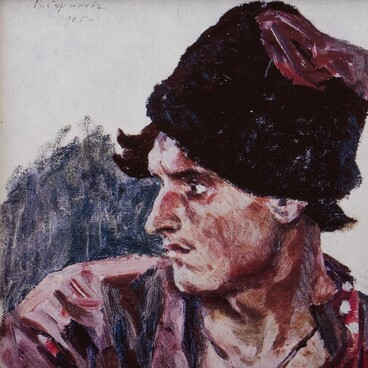A small wooden hatchet from the museum collection belongs to the category of children’s toys that were made in imitation of household items. Since wood was the most common and inexpensive material, it could not but affect the most diverse subject matter of toys, among which those that imitated tools of labor stood out in a peasant family.
It was believed that when playing with such toys, the child got acquainted with their purpose in everyday life, was introduced to the work, and maybe acquired a particular skill. Small children, as a rule, were amused by various rattles-little bells. They were made of dried poppy seed capsules or scraps of cloth with sewn bells. Toys depicting animals — pigs, cows, horses, birds, as well as various whistles were also popular.
These kinds of toys had been made for kids since ancient times. Of course, the old toys were very different from the ones children play with today. They were mostly homemade. They were made by both parents and children themselves. The materials used were very different: straw or cloth, of which dolls were made, or wood, as in the case of a hatchet from a museum collection. Moreover, the craftsmen fantasized as best they could: birch bark, clay, cones, branches, and ropes were used to make toys. In addition, according to a number of researchers, toys in their own way personified a certain stage of childhood. For example, for young children toys stimulated movement, vision, and hearing, stimulated the simplest orientation.
Also, infants could play with various jars, little nails, and stones. In the old days, children’s toys were called poteshkas (playthings). The girls mostly amused themselves with dolls made of rags and straw. At the same time, it is interesting that the faces of the dolls were not drawn, allowing the child to get creative and paint the toy herself. Playing with dolls, the girl acquired the skills of a hostess and a mother.
There were also toys for babies in the cradle. Most often, various bells, jingles, and rattles hang on them. They were called trinkets. They were intended not only for amusement of a child, but also for the baby to be able to concentrate the sight at bright objects. In addition, the parents sincerely believed that trinkets could protect the baby from the ‘evil eye’ or from evil spirits.
All children’s toys were treated with great care. They were never scattered around the hut, they were kept in a certain place. Sometimes the toys were inherited as a dowry of a girl getting married, and then passed to her children.
It was believed that when playing with such toys, the child got acquainted with their purpose in everyday life, was introduced to the work, and maybe acquired a particular skill. Small children, as a rule, were amused by various rattles-little bells. They were made of dried poppy seed capsules or scraps of cloth with sewn bells. Toys depicting animals — pigs, cows, horses, birds, as well as various whistles were also popular.
These kinds of toys had been made for kids since ancient times. Of course, the old toys were very different from the ones children play with today. They were mostly homemade. They were made by both parents and children themselves. The materials used were very different: straw or cloth, of which dolls were made, or wood, as in the case of a hatchet from a museum collection. Moreover, the craftsmen fantasized as best they could: birch bark, clay, cones, branches, and ropes were used to make toys. In addition, according to a number of researchers, toys in their own way personified a certain stage of childhood. For example, for young children toys stimulated movement, vision, and hearing, stimulated the simplest orientation.
Also, infants could play with various jars, little nails, and stones. In the old days, children’s toys were called poteshkas (playthings). The girls mostly amused themselves with dolls made of rags and straw. At the same time, it is interesting that the faces of the dolls were not drawn, allowing the child to get creative and paint the toy herself. Playing with dolls, the girl acquired the skills of a hostess and a mother.
There were also toys for babies in the cradle. Most often, various bells, jingles, and rattles hang on them. They were called trinkets. They were intended not only for amusement of a child, but also for the baby to be able to concentrate the sight at bright objects. In addition, the parents sincerely believed that trinkets could protect the baby from the ‘evil eye’ or from evil spirits.
All children’s toys were treated with great care. They were never scattered around the hut, they were kept in a certain place. Sometimes the toys were inherited as a dowry of a girl getting married, and then passed to her children.



